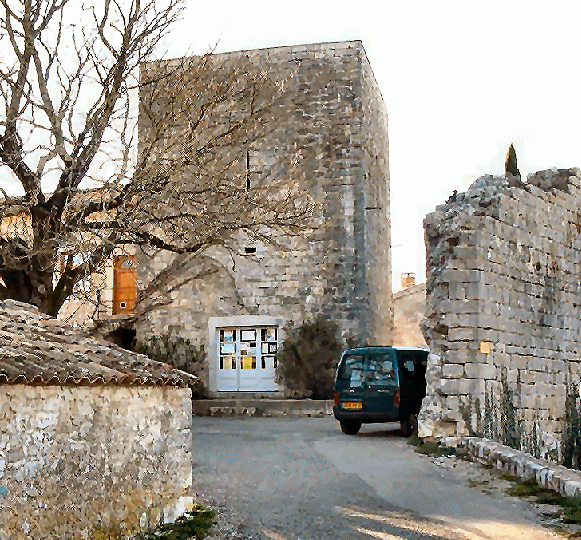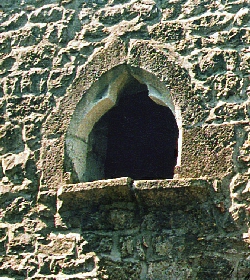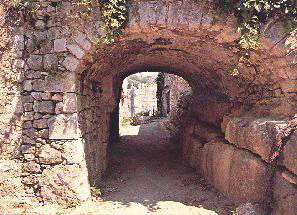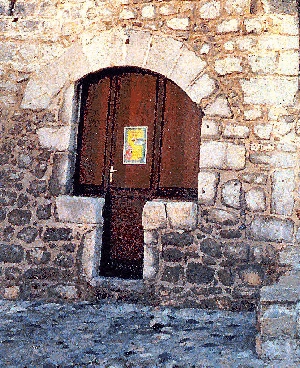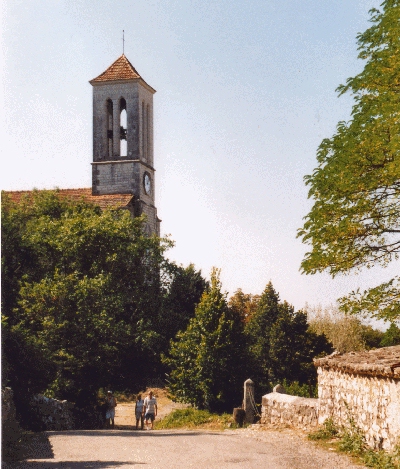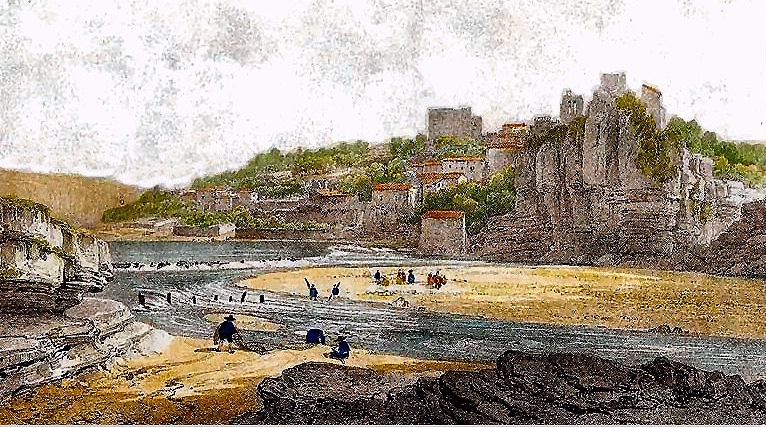The
ramparts, noble dwellings and medieval stalls should not make us forget the
centuries of laborious life of the village, its notables, artisans and peasants
who have left to this day traces of their passage.
Certain architectural features allow us to follow the evolution which, on the
whole, have respected the more ancient constructions.
Le Portalas
Opposite the Square Tower the wall has been destroyed. In the Middle Ages,
the upper part of the wall of the rampart did not have an opening, but rather
a ditch round it.
The opening here was made during the 18th century, the fortification having
lost all interest. This gave the village access to the "Chemin Royal",
by which carts could be driven down to the river without going through the narrow
lanes inside the walls.
Place du Village or Village Square
This was developed in 1944. The actual road dates from 1897. Until then
the village had only narrow lanes, often partly roofed by arches or vaults.
Only carts could pass along them. Most transport was done by mule or back packs.
By the car-park can be seen the thickness of the rampart which circled the village.
Notice the house of a nobleman, with a trilobal windows, built in the 13th century.
At one time these were thought to be marks of arab occupation.
It is a fact that after the battle of Poitiers in 732, the Arabs remained several
years in the region until they went South.
No signs of their passage can be found in Balazuc buildings.
La
Trouée de la Fachinière or Witch's Hole
This cavity, due to geological erosion, was said to be inhabited by a whitch
who could cast spells.
In 1897, to open a road from the railway station to the bridge, it was found
necessary to demolish several houses, mostly dating from the Middle Ages, and
to dynamite som of the rocks (traces of crowbars still be seen)
The New Church
Built between 1892 and 1895. Curiously this was because of the new laws of
education of the 3rd Republic. When the government made school compulsory,
the inhabitants of hamlets on the right bank of the Ardèche agreed
to send their children to school in Balazuc on condition that they did not
have to cross the river by the ferry, not always safe.
That
is why the bridge was built in 1884. But when the bridge was built, Catholics
from the hamlets of Audon and Servières saw no reason to attend distant
churches at Lanas or Uzer. They wanted to come to Balazuc. The old church was
too small to hold them and it was decided to built a new one.
THE
VILLAGE
A
shop in the 13th century
In
the lanes, we can see numerous old houses and also any more younger
Balazuc
in 1850
